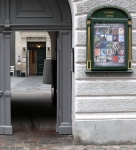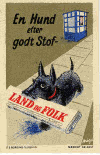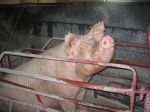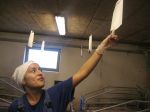| A TASTE OF EUROPE – Eastern Europeans working in Danish agriculture |
 |
 |
|
ATTENTION! The temporary exhibition is closed due to water-damage after cloudburst 2 July 2011 27 January - 30 July 2011 The forthcoming special exhibition at The Workers’ Museum A taste of Europe - Eastern Europeans Working in Danish Agriculture samples European food and takes the temperature of the labour market in which this food is produced.
Danish culinary culture – why do we eat the way we do?A Taste of Europe is part of a broader EU exhibition raising the question of why we eat the way we do, about our dietary habits and the deliberate attempts to influence our culinary culture and about our responsibilities as consumers.All the nine EU Member States working together in this project focus on foods that have a particular national significance – such as bread, milk, or fish. Who produces our food and why do they do it?By focusing on working life and production, A Taste of Europe takes on another meaning: we look at the effects of developments in the European labour market where open borders and a number of special arrangements have led to a situation in which 20 per cent of the workers employed on Danish pig farms have come from Eastern Europe. In their search for ‘the good life’, education, human challenges and material security, Ukrainians, Romanians, Balts, and Poles flock to large and modernized Western European farms. In its forthcoming exhibition by means of specific personalized portraits, the Workers’ Musuem seeks to provide a clear impression of what life is like for some of these new workers in the Danish labour market. Seen from a historical perspectiveBy placing present-day migratory work in the perspective of the large-scale waves of immigrants from Poland around 1900, the exhibition sheds light on the phenomenon and invites spectators to actively make up their minds about some of the issues raised by the exhibition. Is it okay to hire Eastern European workers at a lower rate of pay? Who is responsible when someone leaves their children and family in Romania to go abroad to earn money? Eastern Europeans themselves? Farmers? The State? The consumers? – and how much are you yourself willing to pay for a pork chop? Have you thought about the impact of your own culinary habits and the demand for cheap pork? The exhibition is sponsored by:
|




















